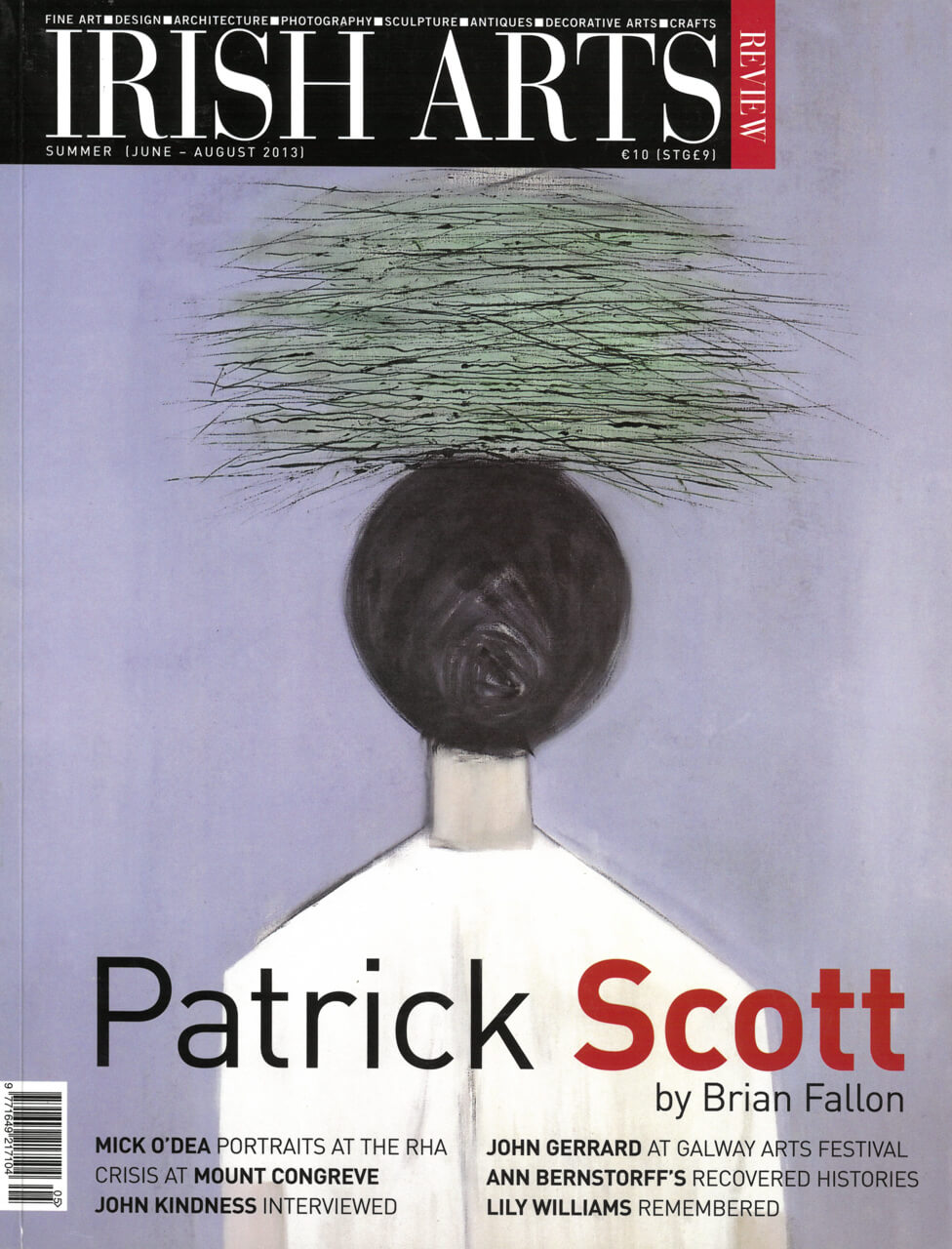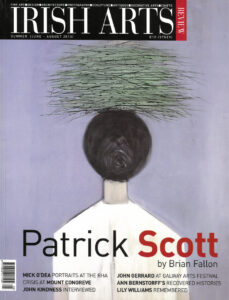

We look back on Michaele Cutaya’s article who fell within the orbit of John Gerrard’s virtual constructions in her analysis of his featured project at the Galway Arts Festival in 2013
In July 2012, John Gerrard co-organized with the philosopher Robin Mackay a round table discussion ‘Simulation Exercise Operation’.1 An interdisciplinary group of participants were invited to address the increased role of simulation in all aspects of our life, and whether a definite distinction between the simulated and the real was still valid.
Simulation and its shifting relationship to reality is an ongoing concern in Gerrard’s artworks. The technology that he has appropriated, from 3D scanner to Realtime gaming engine into his practice as sculptor and photographer has enabled him to develop what he calls ‘sculptural photography’. According to Gerrard ‘One aspect of the virtual, or real-time 3D medium that has always fascinated me is the extent to which the temporal becomes a sculptural component within it.’2 His virtual ‘portraits’ – which include trees, storms, buildings or soldiers as well as faces – combine photographs and gaming technology to redeploy the subject in virtual time and space.
The two large-scale digital projections, presented at this year’s Galway Arts Festival, Cuban School (Community 5th of October) 2010 and Cuban School (Sancti Spiritu) 2011 are the virtual portraits of two schools on the outskirts of Havana. The artist’s attention was initially drawn by the incongruity of their architecture in this landscape and their dilapidated appearance. Built in the 1960s using technology and ideology borrowed from the Soviet Union, the pre-university schools were part of an ambitious education programme by the Cuban government to mix work and study. The disappointing results of the programme and the expiration of resources are reflected in the decaying conditions of the buildings. The structures were not abandoned however and the artist referred to them as ‘functioning ruins’ as a group made up of members of staff and students struggle to keep them going against all odds. Intriguingly or coincidentally the schools have effectively been closed since the making of the work.
The schools are represented through the specific process that Gerrard has developed and refined over the years for transposing sites and strutures in a virtual portrait. The initial stage consists in making an extensive on-site photographic recording of the building in walking around it: the artist functioning as a scanner – this process was somewhat complicated in the Cuban Schools’ case as he did not have proper authorization to do so. These photographs are then applied on a 3D model constructed from satellite images and topographic data. The artist explains that this is a labour intensive ‘hands on’ process on which he works with a modeller, a programmer and a producer based in Vienna; it can take up to nine months to produce these models. The model and its surrounding landscape ‘dressed’ with the photographic textures and surfaces are then run through the real-time engine and replaced in a virtual space which allows the viewer to walk around the building. The site is also ‘placed’ in time tethered to the site of origin by mirroring its time of day throughout the year. The work has a 365- days’ long projection cycle. The solar cycle is a crucial component of Gerrard’s work and has several implications: one is to integrate time as a sculptural component which ‘grounds’ the virtual image, another is to draw attention to our relationship to the sun in spite of our energetic emancipation: ‘Since the Industrial Revolution, the harnessing of mineral forms of energy has enabled us fundamentally to disentangle ourselves from the passage of time as dictated by the sun – the sun as primary energy source and as primordial keeper of time.’3
the images we encounter are produced and discarded in the moment so that the same image is never repeated
Yet another implication of the sun’s presence in the work is its orbit as a trajectory. The artist often refers to his medium as ‘orbital’ in the literal sense of integrating the orbit of the sun into the work but also as a description of the virtual camera movements around the subject. ‘My understanding of this medium, my relationship to it, is profoundly orbital. The works stage a world, in which certain set behaviors have been put in motion. One of them is what I call an orbital camera, a camera that moves, at walking pace, around the scene – the human presence: being there, the witness.’4
This description of the medium as orbital sets it apart from the cinematic loop: the images we encounter are produced and discarded in the moment so that the same image is never repeated; there is no image to refer back to. But it also sets it in contrast to the original use of realtime technology by the military and the gaming industry. In military simulated situations as in most games situations, the medium is invasive; the simulation is constructed around the viewpoint of the invading combatant who is moving in. Instead, Gerrard takes us for a leisurely stroll around the site, orbiting around the building, our desire to come closer frustrated, we are kept at a respectful distance.
The Cuban School pair, inscribe themselves in a series of works that have focused on architectural and industrial structures such as Grow Finish Unit (Near Elkhart, Kansas) 2008 and Oil Stick Work (Angelo Martinez, Richfield, Kansas) 2008 which started from an exploration of the American landscape in 2007 for Dust Storm (Dalhart, Texas). The interest in the correlation between our energetic consumption and its ecological consequences already present in the 2006 Smoke Tree series5 was pursued further in the semi-desert plains of the Dust Bowl region. The area was devastated in the 1930s by the succession of dust storms that blew the soil away: a consequence of the intensive ploughing enabled by fuel powered tractors in the early decades of the 20th century. Dust Storm was a reconstruction of a 1935 dust storm in its actual settings and the subsequent works took the strange human-less structures that are now the almost exclusive inhabitants of this landscape as their subject (Fig 5). Devoid of human presence they are perfectly functional as growing or storing units relying on energy resources to automate the whole process. In Oil Stick Work, a lone human presence is introduced, modelled on the real life Angelo Martinez whose task it is to paint the whole grain silo with a black oil stick. Working from dawn to dusk he will finish in 30 years, slowly masking out the silo. It is an anti-memorial of sorts to the depleted oil resources in the US (Fig 5). In Cuban School (Community 5th of October), the figure of the caretaker Mariebelle Leon mirrors Angelo Martinez’ presence but, as her task is to turn on the lights at dusk and turn them off at dawn, she seems to be keeping the building alive and stands in for the actual inhabitants (Fig 2). The surfaces of the school buildings are, unlike those of the industrial structures which were new and featureless, saturated with signs of decay and continuing life with multiple graffiti made by students. The overall impression is that in spite of having been abandoned by its remote ideology, the inhabitants are resilient and re-appropriating these alien forms. In his essay on Gerrard’s work Mackay concluded that what was sacrificed in both industrial units and the pre-university schools was a sense of place and history: ‘In aligning the incongruous presence of the Cuban Schools – appropriate emblems for this attempted political remote-control – with the equally remote-controlled industrial facilities of his previous works, Gerrard reflects on the universality of the functionalist legacy of modernism.’6
In Gerrard’s most recent body of work, the human figure and the military associations the technology suggests, come to the fore with soldiers in training exercises as their subject. In Infinite Freedom Exercise (Near Abadan, Iran) 2011 (Figs 6& 7), we orbit around the figure of a soldier in the desert going through a series of choreographed movements which are used to protect the body in live fire situations. The connection between the movements of soldiers in training and dancers’7 was teased out by choreographer Wayne MacGregor in his collaboration with Gerrard for Live Fire Exercise (Djibouti) 2011, a new piece for the Royal Opera House in London (Fig 3). This move towards an organized and ‘controlled’ body through choreography offers new areas of development for Gerrard’s work. The effects and constraints of power whether energetic or ideological that Gerrard previously traced on landscape and structures are now recorded directly on the human body. How these effects might be disrupted may well be the underlying question.
Michaele Cutaya is a writer on art and co-editor of Fugitive Papers.
1. Roundtable discussion ‘Simulation Exercise Operations’, Oxford Summer 2012.
2 John Gerrard and Simon Groom in Conversation in John Gerrard, Ivory Press, 2010, p.123.
3 as note 2, p.125.
4 as note 2, p.127
5 Patrick T Murphy ‘Through Time and Space: John Gerrard’s Image Objects’ Irish Arts Review Winter 2006, pp74-75.
6 Robin Mackay, ‘Synthetic Liter[e]alism’ in John Gerrard, Ivory Press, 2010, p. 39.
7 Louis XIV praised ‘The art of dance[‚Ķ] as providing [the body] the most fundamental and natural disposition to all sorts of exercise, the bearing of arms included’ – Louis XIV, Founding letters patent of the Academie Royale de Danse, 1661.
From the IAR Archive
First published in the Irish Arts Review Vol 30, No 2, 2013



